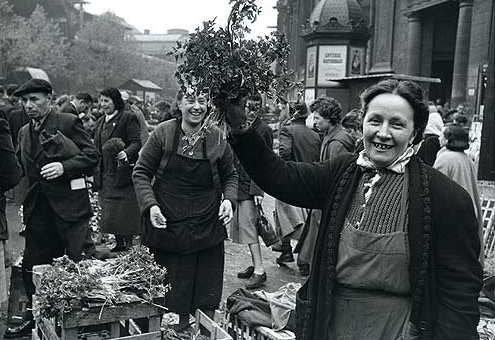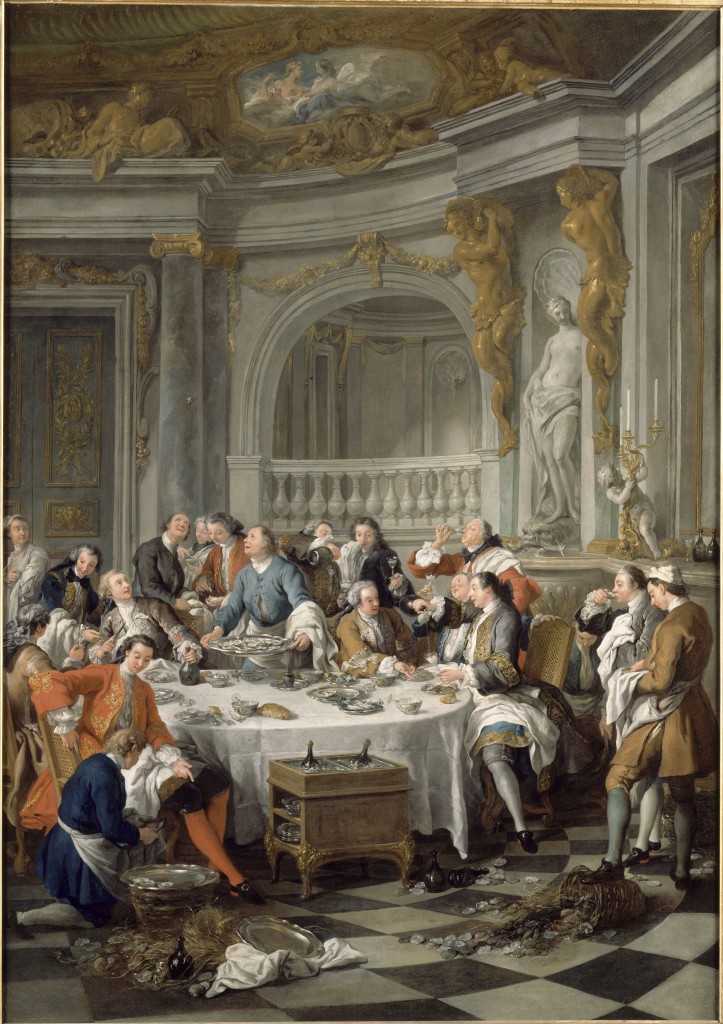
EMILE ZOLA’S 1873 novel Le ventre de Paris (‘The Belly of Paris’) opens with a pre-dawn parade of horse-drawn carts laden with produce making their way to Les Halles, the city’s great public food market. Although the story unfolds during the Second Empire (1851-1870), the scene would have been familiar to a Parisian of the eighteenth or even twelfth century. In fact, the daily train of foodstuffs wending its way into the city from the farms outside its walls is as old as the very first city – as old even as the idea of the city.
And what is that idea? That a critical mass or persons might concentrate themselves in a single high-density community with a view to to pursuing occupations not directly linked to agriculture. At first, these professions comprehended little more than kings, courtiers, administrators, warriors, stargazers, priests, artisans, and merchants.
Yet even this modest level of specialization becomes possible only when individuals are freed from the necessity of cultivating crops and tending animals. These tedious tasks are outsourced to a peasantry who, in return for the use of land to support themselves, agree to share the bounty of their fields — and vineyards — with the city.
It was in cities that wine competed for the attentions and purses of consumers, and in cities that a critical consuming public for wine gradually took shape.
The story of centrally-organized, cereal agriculture in the ancient Near East is well-known; less so its lengthy romance with wine imported from the remote vineyards of present-day Georgia, Armenia, and Turkey. Moving wine from its source in the mountains into the urban centers of Mesopotamia with their paved streets and ziggurats was arduous – something no one undertook without the prospect of profit.
The Greek historian Herodotus describes how it worked. A boat just big enough for two men, a few skins of wine and a donkey was assembled and floated down the network of rivers that eventually reached the great cities of the plain. Once arrived at the metropolis the wine was sold at whatever price could be had, the boat disassembled and packed on the back of the donkey, and the much less leisurely trek back to the mountains begun.
Ur, Babylon, and Nineveh drained the vineyards of the Caucasus and Zagros mountains far to the north and grape wine emerged as an important marker of wealth and elite status. In the same way, Paris had became a sponge for the wines of Champagne, Burgundy, and the Loire centuries before Zola novelized Les Halles and its denizens.
By the thirteenth century Bordeaux was growing rich slaking the thirst of London’s royals, nobles, and wealthy bourgeois with its marvelous claret; the metropolitan centers of the Low Countries and northern Germany running a close second. You could make the same argument for the magnetic power exerted by Vienna, Milan, Madrid, and Berlin on the wine regions within their spheres of influence. Cities don’t make wine, but they attract it, absorb it, consume it – and eventually make it over in their own image.
It was in cities that once restaurants had invented themselves, invented the wine list.
It was in cities that wines competed for the attentions and purses of consumers and in cities that a critical consuming public for wine gradually took shape. Standards of taste and quality were established at courts and trickled down to other classes. Since wine had to travel, often over long distances, to reach an urban market, consumers demanded wines that could bear the stresses imposed by long journeys. They also wanted healthy wines that wouldn’t go off in days or weeks of being put into the cellar, wines with stabilizing levels of alcohol.
Lastly, of course, they wanted wine that tasted delicious. Champagne, Port, Sherry, Madeira, claret, are a few wines that exist as categories today solely as a result of consumer demand issuing from population centers far from the vineyards where grapes were sourced.

The skills involved in perceiving and weighing the minor differences that lift one thing above another in a hierarchy of excellence (the old fashioned term is ‘connoisseurship’) emerge only where there are choices – and it was the city that made choice possible. How else does one become an expert except via long experience comparing many examples of similar things drawn not just from the immediate neighborhood, but from all over?
Since comparisons can only be made where abundance and diversity are present, it follows that connoisseurship is itself a uniquely urban phenomenon.
The countryside had its inns, but it was in cities that cafes and wine shops flourished — and it was in cities that restaurants, once they had invented themselves, invented the wine list. The first wine writers were urbane, and so were their readers.
Although today we celebrate the artisan winemaker as auteur, no wine intended for market rather than immediate local consumption has a credible claim to be solely the creation of its winemaker, no matter how visionary. This is mainly because the fundamental structures of wine – including agreed-upon levels of wholesomeness, drinkability, and durability were laid down long ago as producers sought to satisfy demands made by sophisticated consumers in urban hubs.
Creativity in winecraft certainly exists, but it only within certain relatively narrow, normative bounds that are widely acknowledged and closely observed.
Everything we know about the development of the world wine trade argues against the idea that gains in the stability, authenticity, and general quality that characterize modern wine would or could have been made absent the influence of cities that not only demanded better and more durable wines, but were willing to pay the bill for the centuries of R&D that made them possible. Isn’t it time we recognized their contribution?
First published on October 23, 2012
Reach me at stephenmeuse@icloud.com